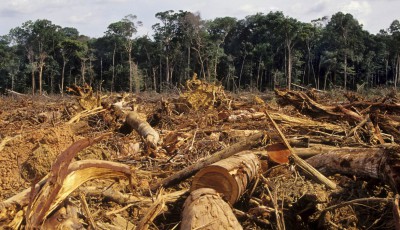Northeastern US faces fiercer hurricanes

By Tim Radford
LONDON, 7 December, 2016 – Hurricanes could hit harder and more often along the northern Atlantic coast of the US.
A new study based on 450 years of documentary and fossil evidence suggests that climate change driven by human combustion of fossil fuels is shifting the pathways of the hurricanes linked with the western Caribbean, and that global warming in the form of higher sea surface temperatures is affecting their intensity.
Hurricane Sandy, which brought catastrophic flooding to New York in 2012, was one of the worst windstorm-driven disasters in North American history. It was also thought to be a once-in-a-1,000-year event.
Powerful hurricanes
But the latest evidence confirms that hurricanes are tracking northwards, threatening cities that were once considered safe.
“Since the 19th century this shift has been largely driven by manmade emissions, and if these emissions continue as expected this will result in more frequent and powerful storms affecting the financial and population centres of the northeastern United States,” says Lisa Baldini, a geographer at the University of Durham in the UK.
“Given the devastation caused by Hurricane Sandy it is important that plans are put in place to protect against the effects of similarly destructive storms that could potentially occur more often in the future.”
She and colleagues write in Scientific Reports journal that they examined the chemical makeup of stalagmites collected from a cave in southern Belize, in Central America, and used their data to reconstruct the pattern of hurricane rainfall over the last 450 years. They then compared their findings with documentary records from Bermuda and Florida, to find that hurricanes were moving north.
The scientists found that a marked decrease in hurricane activity in the western Caribbean coincided with the late-19th-century industrial boom linked to growing emissions of carbon dioxide and sulphate aerosols: both exhausts from coal and oil fires.
“We need to prepare for the effects of more frequent landfalls of larger storms along the northeast coast of the US and stronger storms impacting the Caribbean”
The northern hemisphere cooled a little because of the sulphate emissions. This should have pushed the hurricane hazard southwards. But rising carbon dioxide ratios in the atmosphere over-rode this effect, and pushed the hurricanes further north.
And if CO2 levels continue to rise, sea surface temperatures will increase and hurricanes will shift even further north.
Dr Baldini and her colleagues are not the first to make this point. Researchers have repeatedly warned that a warmer world will bring fiercer windstorms.
Other groups have identified a greater hazard for America’s Atlantic cities and calculated an ever-greater cost to them from hurricane damage and the increasing risk to the northeastern financial centres. Paradoxically, response to these warnings has tended to divide along political lines.
Cyclonic storms
But the latest study does not mean that the Gulf of Mexico and the Caribbean states are necessarily likely to become safer.
“Although hurricane tracks have gradually moved northwards away from the western Caribbean, rising sea surface temperatures could promote the development of cyclonic storms within the western Caribbean,” says co-author of the report James Baldini, an Earth scientist at the University of Durham.
“Consequently, tropical cyclone activity across the western Caribbean may remain essentially stable over the current century, which has important implications for water availability in this region.
“However, increased sea surface temperatures also provide extra energy, potentially fuelling larger storms. We therefore need to prepare for the effects of more frequent landfalls of larger storms along the northeast coast of the United States and stronger storms impacting the Caribbean.” – Climate News Network







